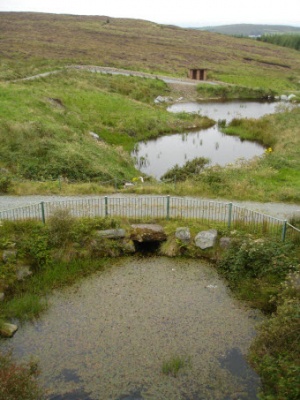Using Science to Support Biodiversity: Difference between revisions
JanetBlair (talk | contribs) (Created page with "{{draft}} {{Rinfo |title=Using Science to Support Biodiversity |topic= |subject=Science, Biology |resourcenumber=TE0057 |age=A level |content= |strategy= |Learning Objectiv...") |
No edit summary |
||
| (17 intermediate revisions by 4 users not shown) | |||
| Line 1: | Line 1: | ||
{{Rinfo | {{Rinfo | ||
|type= Lesson idea | |||
|attribution={{Jocelyn Wishart}} | |||
|final=yes | |||
|title=Using Science to Support Biodiversity | |title=Using Science to Support Biodiversity | ||
|topic= | |topic=Biodiversity | ||
|image=Biodiversity1.jpg | |||
|tagline=A virtual field trip to study biodiversity. | |||
|subject=Science, Biology | |subject=Science, Biology | ||
|resourcenumber= | |resourcenumber=SC0032 | ||
|age= | |age= KS5, Secondary | ||
|content= | |content=This tutorial drives work around a National Park, where student activities might cause damage. A research phase explains what a National park is and we then go on to design an investigation to measure the distribution of plant species across a path. This involves a line transect and an interrupted belt transect which are compared in some detail. Sample results and questions are provided. | ||
|strategy= | |strategy= | ||
|Learning Objectives= | |Learning Objectives= | ||
* Considering some of the issues that arise when scientists monitor the environment to detect changes in biodiversity. | |||
* Gaining the relevant experience and understanding to carry out work in one's local area. | |||
|additional resources= | |additional resources= | ||
|useful information= | |useful information= | ||
|related resources= | |related resources= | ||
|other=The BioEthics Education Project site: http://www.beep.ac.uk/content/592.0.html | |other= | ||
| | |format=A tutorial with web links to explore. | ||
|resources= | |||
* The BioEthics Education Project site: http://www.beep.ac.uk/content/592.0.html | |||
* [[Using Science to Support Biodiversity/teacher notes|teacher notes]] | |||
}} | }} | ||
[[File:Biodiversity2.jpg|border|340x340px| |free to use; Preview snapshot ]] | |||
[[Category:Secondary]] [[Category: Science]] | |||
Latest revision as of 20:10, 2 February 2015
Lesson idea. This tutorial drives work around a National Park, where student activities might cause damage. A research phase explains what a National park is and we then go on to design an investigation to measure the distribution of plant species across a path. This involves a line transect and an interrupted belt transect which are compared in some detail. Sample results and questions are provided.
Teaching approach. This is an investigation(ta) in a virtual field trip to Dartmoor National Park. It involves research, designing a scientific investigation and analysing the results. (edit)
| Resource details | |
| Title | Using Science to Support Biodiversity |
| Topic | [[Topics/Biodiversity|Biodiversity]] |
| Teaching approach | [[Teaching Approaches/Investigation|Investigation]] |
| Learning Objectives |
|
| Format / structure | A tutorial with web links to explore. |
| Subject | [[Resources/Biology|Biology]], [[Resources/Science|Science]] |
| Age of students / grade | [[Resources/KS5|KS5]], [[Resources/Secondary|Secondary]]
|
| Files and resources to view and download |
|


